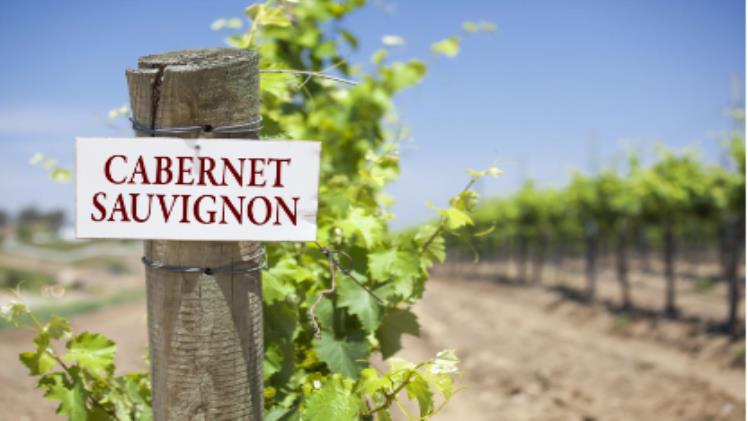Cabernet Sauvignon is one of the most popular and revered grape varieties in the world of wine. Renowned for its rich flavors, bold structure, and aging potential, this red wine has earned a special place in the hearts of wine enthusiasts. In this comprehensive guide, we’ll delve into the depths of Cabernet Sauvignon, exploring its characteristics, taste, and the best regions where it thrives.
1. What is Cabernet Sauvignon?
Cabernet Sauvignon is a red grape variety that originated in the Bordeaux region of France. It is a cross between Cabernet Franc and Sauvignon Blanc, two well-known grape varieties in their own right. Cabernet Sauvignon vines are now widely planted across the globe due to their adaptability to various climates and soil types.
The grape’s thick skin is one of its defining features, contributing to its high tannin levels and deep color. These tannins play a crucial role in the aging process, making Cabernet Sauvignon an excellent candidate for cellar aging.
2. How to Store Cabernet Sauvignon
Proper storage is vital to preserving the quality and aging potential of Cabernet Sauvignon. Follow these guidelines to learn how to store cabernet Sauvignon your and ensure your wine remains in its prime:
- Temperature: Store your Cabernet Sauvignon at a consistent temperature of around 55°F (12-15°C). Fluctuations in temperature can damage the wine and cause premature aging.
- Humidity: Maintain a humidity level of 70% to 80% in your wine storage area. This prevents the corks from drying out and allows the wine to mature gracefully.
- Darkness: Keep your wine away from direct sunlight and fluorescent lights. UV rays can cause chemical reactions in the wine, resulting in unpleasant aromas and flavors.
- Position: Store wine bottles on their sides to keep the cork moist and airtight, preventing unwanted oxygen exposure.
- Stability: Choose a storage area where the wine bottles won’t be disturbed or agitated, as vibrations can negatively impact the aging process.
Remember, a wine refrigerator or a dedicated wine cellar is the ideal storage solution for long-term aging of Cabernet Sauvignon.
Learn more about the best practices for storing Cabernet Sauvignon in our comprehensive wine storage guide.
3. The Characteristics of the Grape
Cabernet Sauvignon is known for its remarkable characteristics, making it stand out among other grape varieties:
- A. Tannins: As mentioned earlier, Cabernet Sauvignon has high tannin levels, which give the wine its astringent and mouth-drying quality. This feature is responsible for its potential to age and soften over time.
- B. Flavor Profile: Cabernet Sauvignon typically boasts dark fruit flavors, such as blackcurrant, blackberry, and plum. Additionally, you might detect notes of cedar, tobacco, vanilla, and even green bell pepper in some examples.
- C. Full-bodied: This wine is rich and full-bodied, providing a velvety texture on the palate that lingers long after each sip.
- D. Aging Potential: Cabernet Sauvignon has an exceptional aging potential, especially when sourced from high-quality vineyards. Properly cellared Cabernet Sauvignon can age gracefully for decades, gaining complexity and depth.
4. What Does Cabernet Sauvignon Taste Like?
When savoring a glass of Cabernet Sauvignon, you can expect a captivating experience:
The initial aroma offers a burst of ripe black fruits, entwined with hints of spices and subtle oak. As you take your first sip, your taste buds are met with intense blackcurrant and blackberry flavors, complemented by a touch of tobacco and dark chocolate. The wine’s robust tannins create a structured mouthfeel, leading to a long and satisfying finish.
5. Top Cabernet Sauvignon Regions
Cabernet Sauvignon has made its way to various corners of the world, producing outstanding wines in multiple regions. Some of the top Cabernet Sauvignon regions include:
- Napa Valley, California, USA: Renowned for its opulent and powerful Cabernet Sauvignons, Napa Valley offers wines with ripe fruit and a perfect balance of tannins.
- Bordeaux, France: The birthplace of Cabernet Sauvignon, Bordeaux produces classic blends, often pairing Cabernet Sauvignon with Merlot and Cabernet Franc.
- Coonawarra, Australia: Known for its “terra rossa” soil, Coonawarra produces Cabernet Sauvignons with distinct minty and eucalyptus notes.
- Maipo Valley, Chile: Chile’s Maipo Valley boasts exceptional Cabernet Sauvignons with remarkable structure and intense fruit flavors.
- Stellenbosch, South Africa: This region produces Cabernet Sauvignons with a unique combination of dark fruit flavors and herbal undertones.
Where to Buy Cabernet Sauvignon
If you’re looking to purchase a wide range of Cabernet Sauvignon bottles as gifts or for personal enjoyment, consider exploring online wine and champagne gift stores. These specialized retailers offer an extensive selection of premium wines from various regions and vintages, allowing you to find the perfect bottle to suit any occasion.
In conclusion, Cabernet Sauvignon is a remarkable grape variety that has captivated wine enthusiasts around the world. Its bold character, aging potential, and rich flavors make it a favorite among red wine lovers. Proper storage and a well-chosen bottle from one of the top regions ensure an unforgettable wine experience. Whether you’re a seasoned wine aficionado or a curious beginner, exploring the world of Cabernet Sauvignon promises to be an exciting journey into the realm of fine wine.

